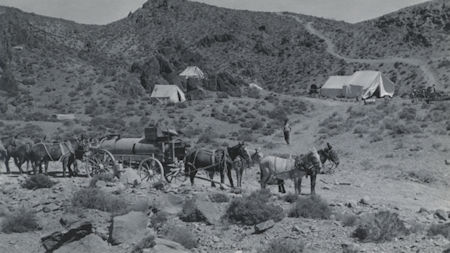
Mule driven wagons carrying water to a construction site for the Leschen tram (Photo courtesy of 'Friends of Cerro Gordo')
From the begining, Cerro Gordo suffered from a scarcity of water. Water was originally imported by pack train or acquired from snowmelt in the winter. Scarcity of readily obtainable water contributed immeasurably in this area to the difficulties of access and mine operation. Springs are few, small, and unreliable in the higher parts of the Inyo Mountains.
In 1870 an attempt by Belshaw to pipe water into Cerro Gordo only resulted in a lot of frozen and broken pipelines.
Close to the range summit, 3 1/2 miles north of Cerro Gordo are several small springs which emerge from the Chainman shale. These springs are named Belshaw, Cronn, and Mexican spring. The three springs are known collectively as the Cerro Gordo Spring.
The completion in May, 1874, of the Cerro Gordo Water-Works, belonging to the Cerro Gordo Water and Mining Company, a Los Angeles corporation, marked an era in the development of the district. Water, heretofore so scarce and only obtainable at from 7 to 10 cents per gallon, was now supplied to the mines, furnaces, and citizens at a cost of from 1 1/2 cents to 4 cents per gallon.
This enterprise, inangurated in 1873, was only brought to completion in May, 1874. The water was brought from the Cerro Gordo Spring, ten and one-half miles northwest of Cerro Gordo, being raised 1,870 feet to the summit of the Inyos by three Hooker steam-pumps, placed 2,800 feet apart, each pump overcoming a vertical lift of 620 feet.
The discharge-pipes were composed of 3-inch boiler-flues fastened together by screw-collars. From the summit the water ran through thirteen and one-half miles of 4-inch No. 18 and No. 16 sheet-iron pipe, having a fall of 950 feet, to the town of Cerro Gordo.
The sheet-iron pipe was made in Los Angeles, in lengths of 12 feet, coated inside and outside with asphaltum, and in this condition shipped to the site. In laying the pipe the joints were fastened together by a riveted sheetiron collar, made of No. 16 iron, 3 inches wide, being daubed with melted asphaltum and slipped over the joints and held in place by the adhesion of the asphaltum.
As originally constructed, a portion of this pipe was intended to withstand a pressure of 650 feet in crossing a sag in the mountain, thus reducing the length to about nine miles; but, after completion, the water being turned on, the joint-fastenings were found to be entirely inadequate, the pressure being sufficient to force all the water out at the joints.
The expedient of leading the joints was next undertaken, but with no better success; and the engineer in charge not understanding the efficacy of an inside collar, as usually applied in such cases, was obliged to take up the pipe and run it around the mountain, at an increased expense to the company of $26,000, making the total cost exceed $74,000.
Since completion it worked indifferently well, fully two-thirds of the water which passed through the pumps arriving at Cerro Gordo. It was plagued by freezing in the winter. As an investment it was estimated that it would pay back the original outlay in two years.
This water system remained in operation until the 1930's.
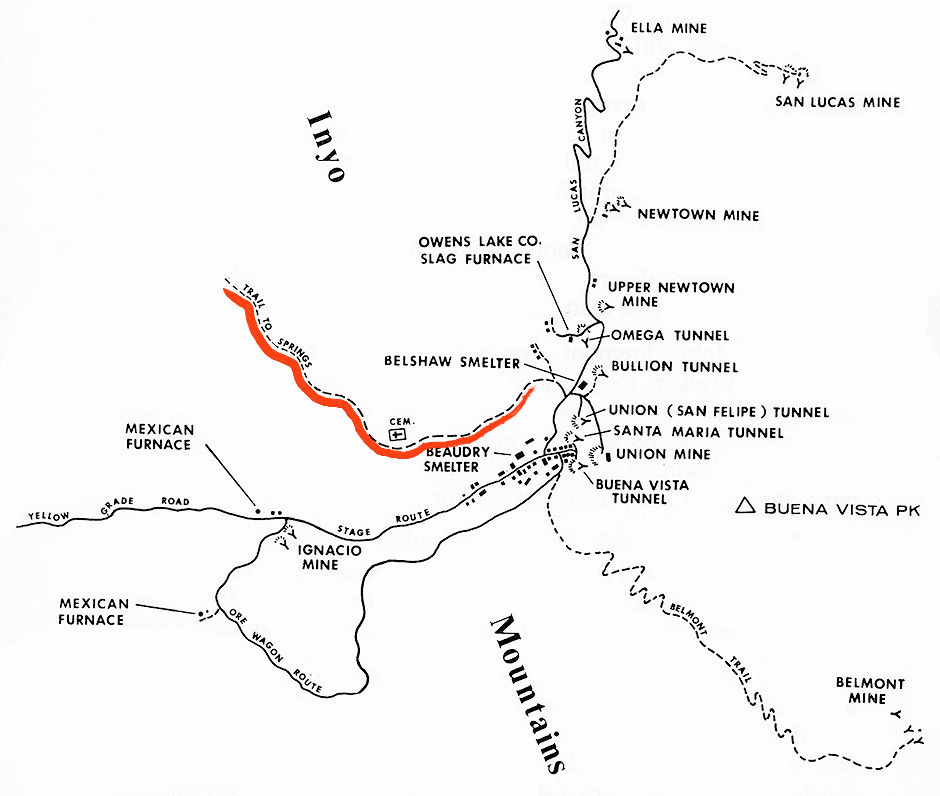
Map of mines with red line for trail to springs
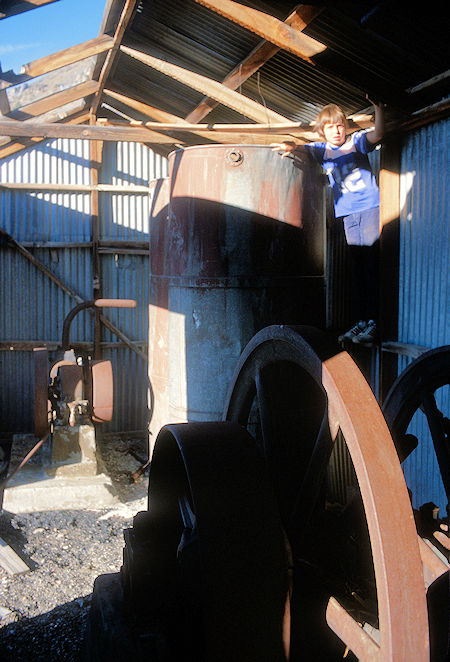
Cerro Gordo Mine Pump House machinery - 1977
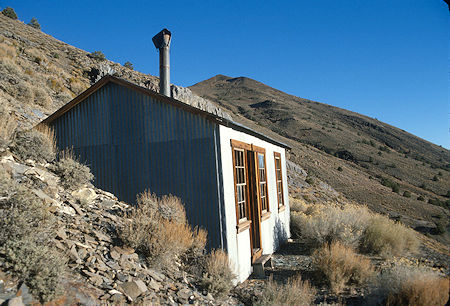
Cerro Gordo Mine Pump House - 1977
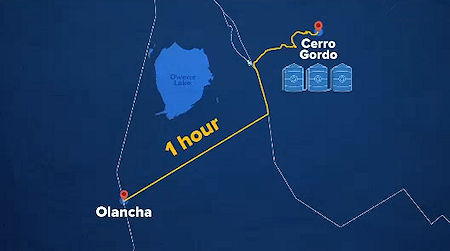
The new 2018 owners installed three 2500 gallon tanks and started hauling water ten miles from Olancha in the Owens Valley
At some point in time, a cistern was built to collect water from a seep (spring) at the 700' level and pump it to the surface. Apparently that pump was replaced at least once since two are seen in the pictures taken in June and October 2018. The system stopped working in about 2010.
In June 2018, four members of a group named Mine Explorers descended into the Belshaw Union Mine Shaft to examine the water pump and to explore the mine. The short video below covers only the water pump examination. The long video covering a detailed examination of the the mine tunnels is found here.
Examination of the water system at the 700 level by Mine Explorers in June 2018
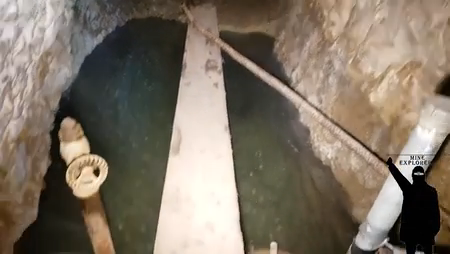
The cistern that supplies water June 2018
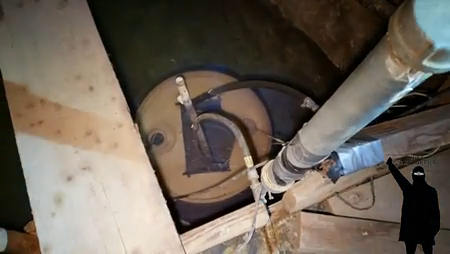
Location of water pump source pipe in the cistern June 2018
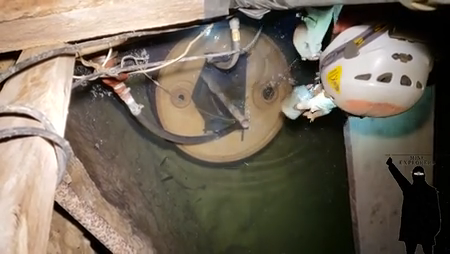
Examining the low water pump cutoff switch June 2018
The Underground Explorers, Professional Abandoned Mine Exploration and Technical Services (information here and their Facebook site) attempted a survey of the water system in 2013 but were unable to reach the 700' level in the mine due to the hoist cage being stuck in the shaft at the 400' level. They were able to free the cage but had to withdraw.
In October 2018, in cooperation with the new owners they descended all the way to the bottom 900' level and then back up to the water works at the 700' level.
The Mine Explorers group determined during their June 2013 examination that the pump still worked but that the piping to the surface had developed so many leaks that no water reached the surface. The Underground Explorers group in October 2018 appears to have not actually examined the functionality of the pump, assuming it didn't work, but gathered information on the water source. As of this writing (2020), repairing the system has been set aside for the moment due to an estimated several hundred thousand dollar cost.
Here is the Underground Explorers report:
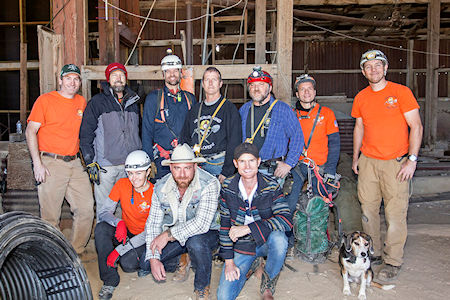
Underground Explorers team with Cerro Gordo Mine owners - Oct 2018
Cerro Gordo was recently purchased and the new owners asked for our assistance in evaluating the current state of the water system and supply.
The town's water comes from a seep located on the 700' level of the 900' deep Union Shaft. The water is pumped up to the surface and then distributed.
The pumping system failed around 2010 and the town has not had a reliable water supply since.
We first worked on the water system in 2013 in conjunction with the Metabolic Studio who rebuilt the hoist house and provided funding for the needed equipment.
Unfortunately do to issues primarily related to the hoist and cage we were not even able to reach the 700' level and only made it down to the 400' level (where we freed the cage from a piece of metal it had become stuck on).
Examining the pump and water source has long been unfinished business for the team.
We rigged the shaft with a 1,000' rope and a 600' rope, both connected to haul systems. Four team members descended the shaft in tandem, adding another 600' rope attached to the 400' level. The team first descended to the very bottom at the 900' level to do a quick survey and take pictures. Then they ascended to the 700' level where we examined the pump, water cistern and water source. We mapped the level and took water samples as well. After that it was a long slow climb back to the surface with the last person leaving the mine more than twelve hours after entering.
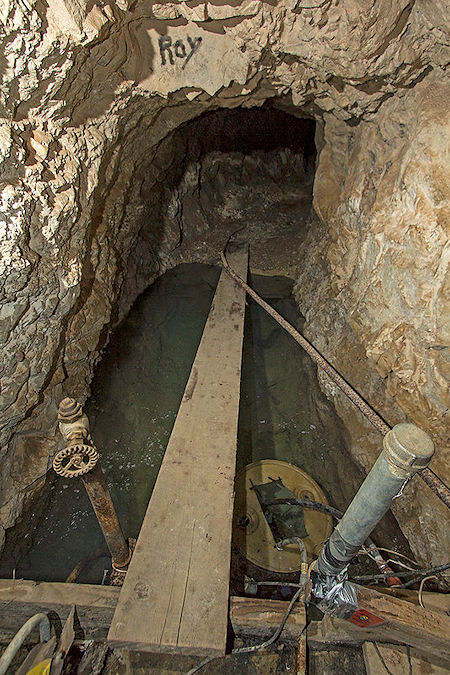
Water cistern at 700' level in Union mine - Cerro Gordo
Underground Explorers Oct 2018
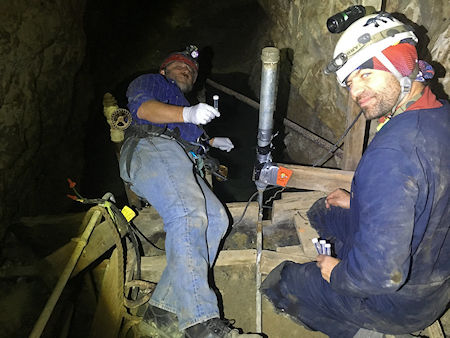
Taking water samples at cistern in Union mine - Cerro Gordo
Underground Explorers Oct 2018
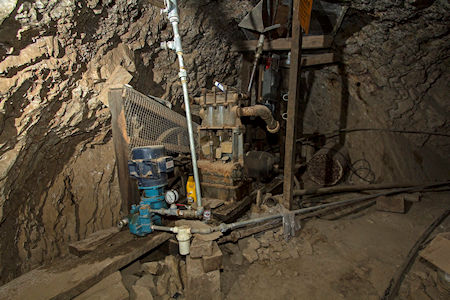
Two water pumps at 700 level in the Union mine - Cerro Gordo
Underground Explorers Oct 2018
Based on our examination the water system requires significant work to be functional and reliable. A new pump is needed along with new piping to the surface. Additional work is also needed to ensure the pump doesn't lose prime. We measured the water flow at just 1.25 gallons per hour. It may be higher in the spring but at this time it does not appear that the supply would justify the expense and risk of repairing the pump and pipes. For now water will be trucked up the mountain and stored in tanks for distribution.
We want to give a huge thank you to the owners of Cerro Gordo for entrusting us to execute this project safely and we really appreciate their faith in us and their willingness to invest in the town and preserve its history.
Here are pictures of Underground Explorers preparations and operations in the Union Mine Hoist House to access the water system.
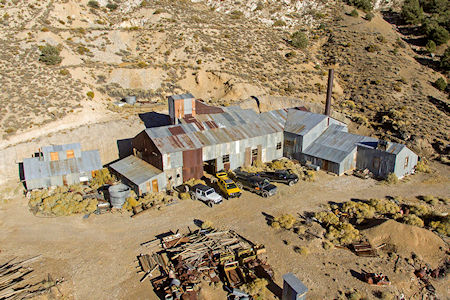
The Union Mine Hoist House (Underground Explorers Oct 2018)
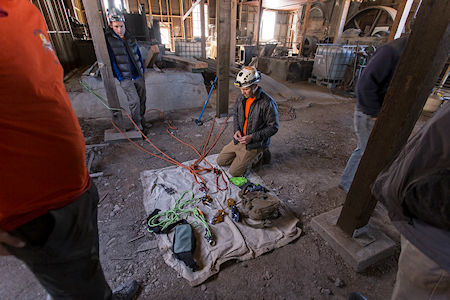
Rigging ropes (Underground Explorers Oct 2018)
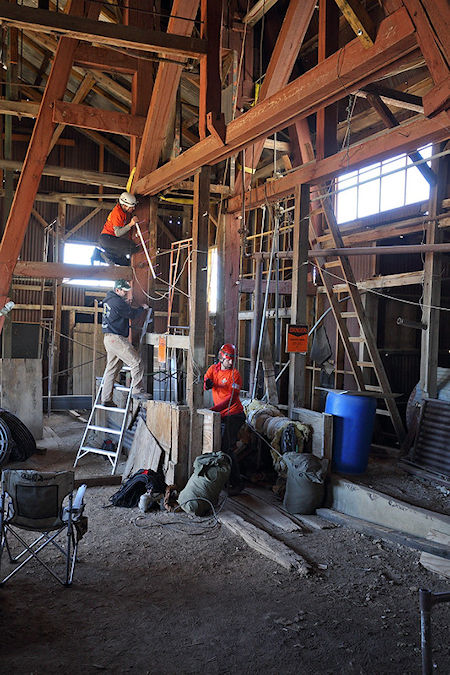
Rigging antenna and more ropes (Underground Explorers Oct 2018)
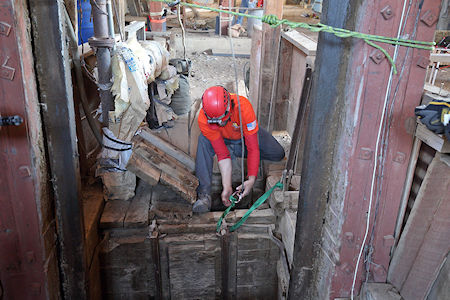
Final rigging at the collar (Underground Explorers Oct 2018)
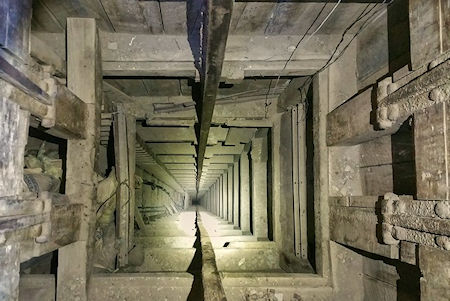
View down 900' Union mine shaft (Underground Explorers Oct 2018)
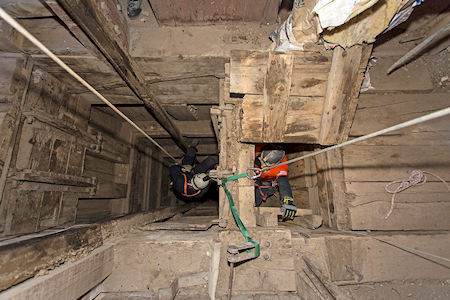
Dav and Fredrik head down in tandem (Underground Explorers Oct 2018)
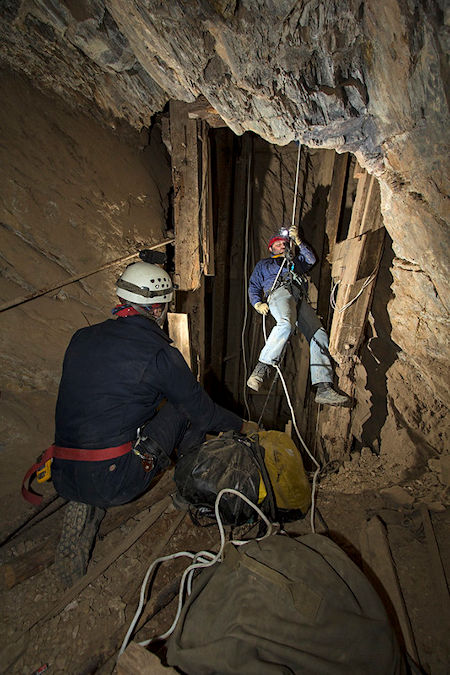
Kurt rappels to the 400' level (Underground Explorers Oct 2018)
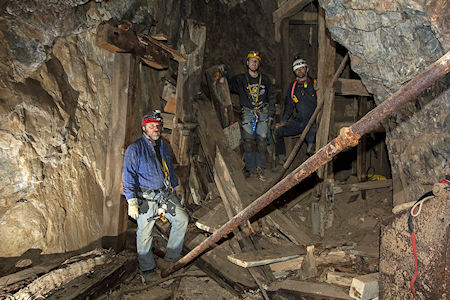
Group shot at the 900' shaft station (Underground Explorers Oct 2018)
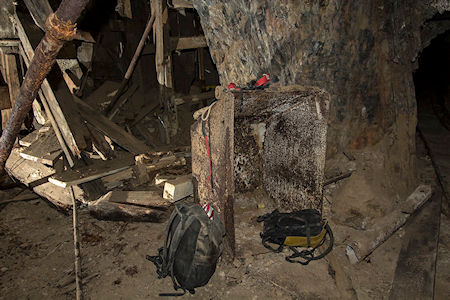
On the 900' level (Underground Explorers Oct 2018)
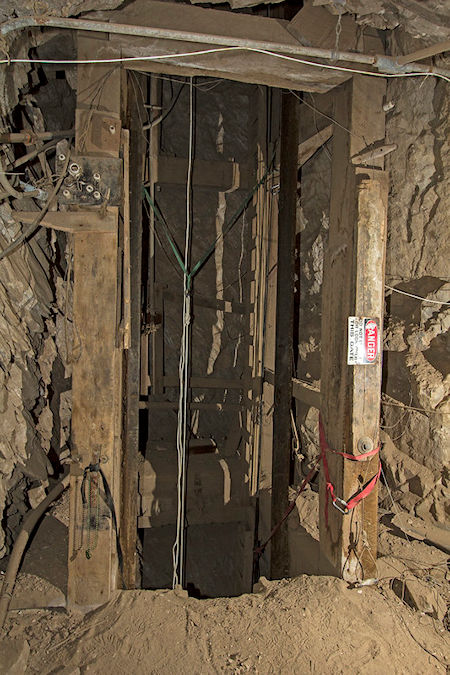
On the 700' level (Underground Explorers Oct 2018)
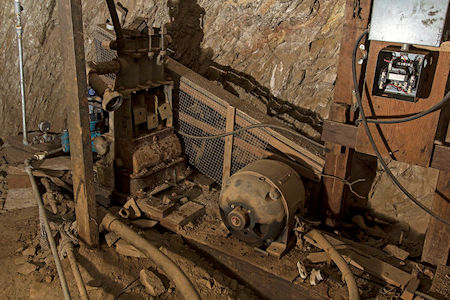
Old water pump at 700' level (Underground Explorers Oct 2018)
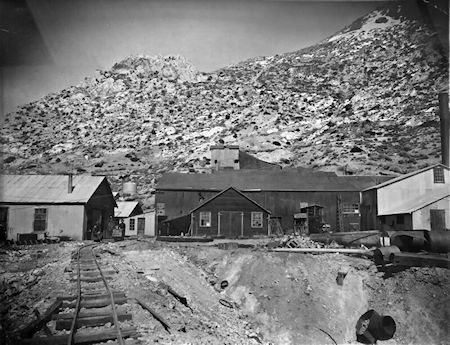
Historic picture of the Hoist House - Cerro Gordo
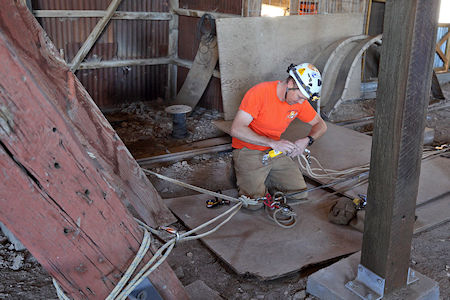
Setting up haul system (Underground Explorers Oct 2018)
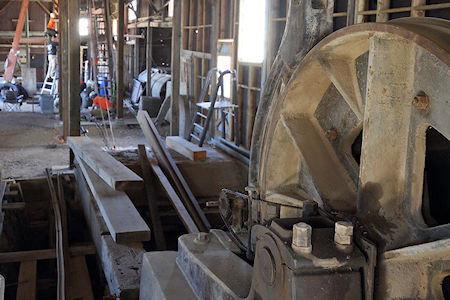
Activity around shaft (Underground Explorers Oct 2018)
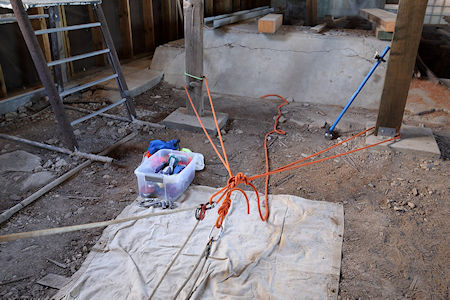
Ropes ready to go (Underground Explorers Oct 2018)
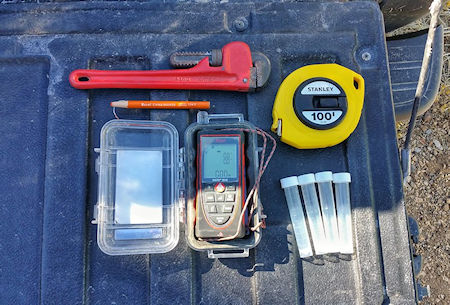
Tools for mapping and sampling (Underground Explorers Oct 2018)
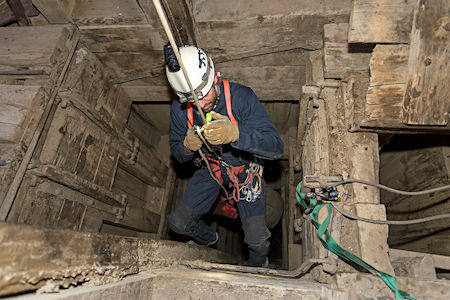
Dav starts his rappel (Underground Explorers Oct 2018)
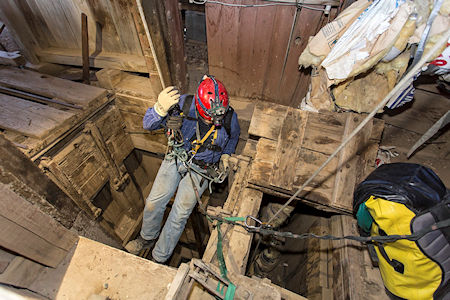
Kurt starts his rappel (Underground Explorers Oct 2018)
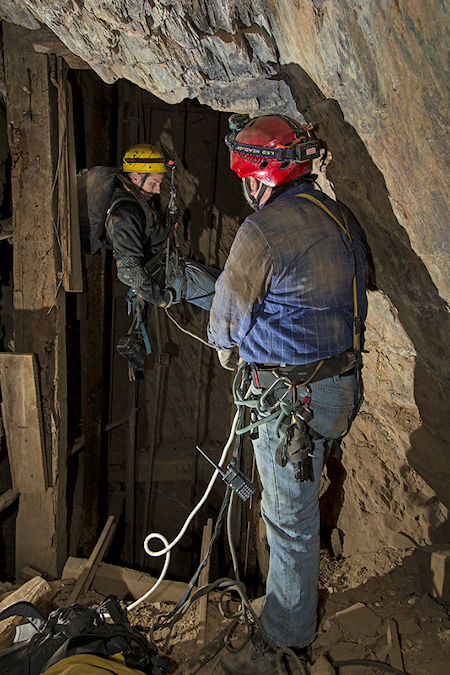
Stacy rappels to the 400' level (Underground Explorers Oct 2018)
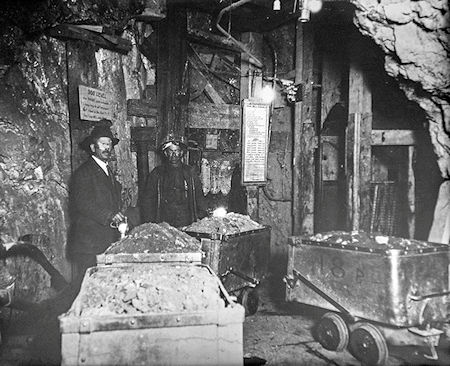
Historic 900' shaft station photo, L. D. Gordon in suit at left
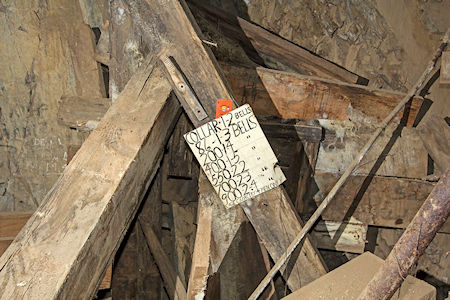
Decidedly less fancy signals sign (Underground Explorers Oct 2018)
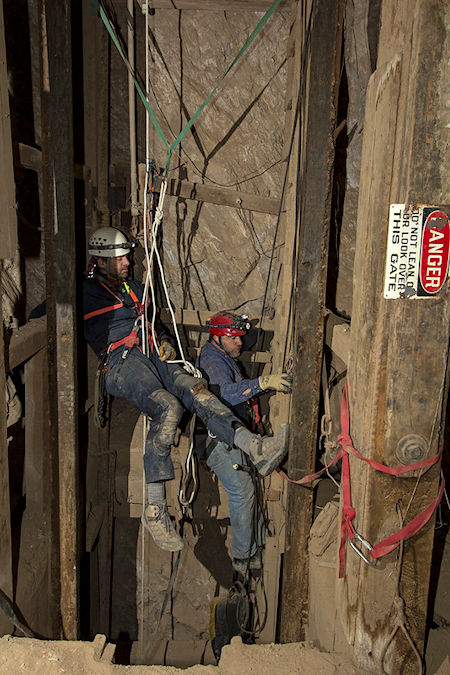
Dav and Kurt ascend to 700' level (Underground Explorers Oct 2018)
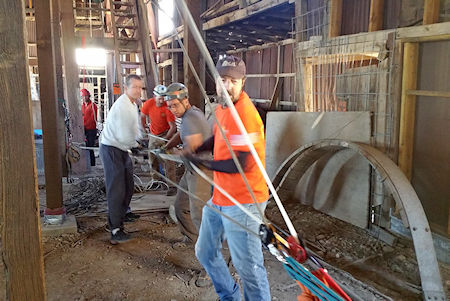
Pulling up 1000' of rope (Underground Explorers Oct 2018)
Information sources regarding mining and water at Cerro Gordo:










